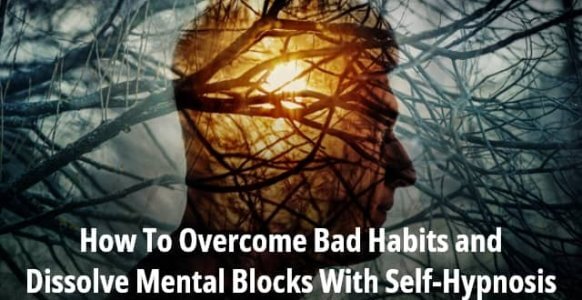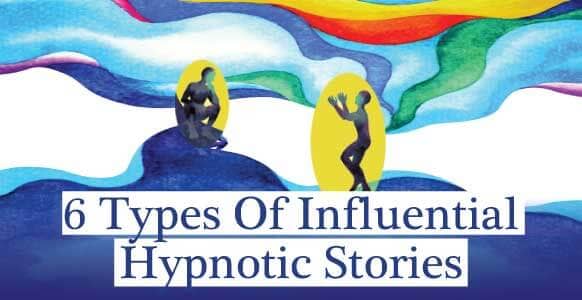In the early 1900s, French psychologist and pharmacist Émile Coué hit the papers for his mantra-like method of conscious autosuggestion, otherwise known as Couéism or the Coué Method. The method required patients to repeatedly say the following phrase in the morning and evening:
“Every day in every way way I’m getting better and better.”
The healing power in this statement came from Coué’s belief that the way to cure your troubles – both emotionally and physically – is through changing your unconscious thought process by using your imagination.
But what most people don’t know is that Coue’s visualizations were said while in trance. As unless you bypass the conscious mind, visualizations and affirmations have little or no effect.
Which is why using visualization as a guide during self-hypnosis can have such profound results when it comes to shifting those unconscious beliefs, such as “I’m not smart or capable enough to start my own business.”
As by telling yourself that you’re indeed brilliant enough to achieve your goals, you give yourself permission to imagine yourself experiencing success. This plants the seed needed to grow your belief in yourself.
So if you’re a little rusty when it comes to visualization and want to enhance your self-hypnosis practice, here are five easy tips to get you into a powerful hypnotic flow.
1) Use Guided Imagery
Does visualizing a tropical beach take you to a relaxed happy place, or does imagining being in your dream office give you the belief you’ll get that promotion?
Whatever it is, don’t just stop at visualizing the setting or location, take it one step further by imagining what the entire scene looks, feels, smells, sounds or even tastes like.
For example, which visualization has the strongest impact?
- “I’m eating my favorite type of cheesecake.”
- “As I take a bite of my favorite cheesecake, the smooth texture crumbles in my mouth as the sweet and sourness of the blueberries teases my palette.”
If you’re anything like most people, the latter visualization probably left you salivating.
Therefore, by allowing your mind to wander into the finer details of your visualization, you’re able to take your mind, and sometimes even your body, there – providing you with a deeper self-hypnosis experience.
2) Visualize The Feeling
By using guided imagery you can begin to visualize a desired feeling you’re looking to achieve in a specific moment.
For example, if you want to feel confident in a particular situation that would normally send your nerves rocketing off the richter scale, start by picturing yourself in that place in time.
If this brings up feelings of anxiety, take a few deep breaths and exhale any tension as you begin to familiarize yourself with the setting. Start imagining yourself being completely relaxed in this setting despite any curveballs that might come your way.
Embrace any nervousness as an opportunity to overcome this fear. Then, tell yourself that you’re the calmest person in the room and let the tension and stress fall away from you.
Repeat this exercise each day before the event, so if you start to feel nervous on the big day, you can take yourself back to this calm mental state.
3) Have Faith
As you start to visualize your desired feeling, try not to judge it – it’s important to believe in yourself!
It’s normal for doubting thoughts to pop up, but don’t give them the attention they’re craving. Acknowledge them and let them pass, and then bring your mind back to the positive sensation you were feeling.
One way to make your visualizations seem believable is by making them as real as possible. Going back to the previous example of feeling nervous at an event, when you visualize it, picture what the room looks like, the other attendees, and anything else that will be an actual reality on the day.
By feeling completely confident in this mental place, you’re giving your unconscious mind the green light to believe in yourself and associate this feeling on an actual day.
4) Practice Makes Perfect
As with anything, practice makes perfect. To get your mind used to visualize, try this simple trick.
Pull out a bunch of photos and really study the details of each one in terms of colors, emotions, and scenery.
After you’ve studied an image, close your eyes and start to recall what the image looks like, and take a second to allow your mind to experience the emotion that was present when the photo was taken. Then move onto the next picture and repeat the same process.
You’ll find this technique is not only really easy, but it will have you conjuring up visualizations in all their pixelated glory in no time!
5) Take Action
 If during your self-hypnosis practice you have been visualizing yourself feeling more confident, for example, when the opportunity arises to put this behavior into practice – take it!
If during your self-hypnosis practice you have been visualizing yourself feeling more confident, for example, when the opportunity arises to put this behavior into practice – take it!
As the preparation you have already done will put you in a stronger frame of mind when it comes to “acting” that emotion next time a situation presents itself.
The end result?
Each time we “act” in these situations, it helps train our unconscious to behave differently until it becomes lodged into our mind as our default behavior.
Another important thing to do to help solidify this belief is by giving yourself an imaginary pat on the back each time you begin to see change. Aside from the obvious benefits of being kind to yourself, your unconscious also positively responds to this “reward” system. As a result, your unconscious mind will actively seek out other positive opportunities to act.
So to deepen your self-hypnosis practice, try incorporating these visualization techniques into your practice by trying these five simple steps.










![Yogic Breathing For Hypnosis: 3 Easy Techniques To Ground & Relax Your Clients Before Inducing A Hypnotic Trance [Includes Infographic] Yogic Breathing For Hypnosis: 3 Easy Techniques To Ground & Relax Your Clients Before Inducing A Hypnotic Trance [Includes Infographic]](https://hypnosistrainingacademy.com/wp-content/uploads/2019/05/yogic-breathing-for-hypnosis.jpg)
![[ADVANCED GUIDE] How To Master Hypnotic Regression Therapy - Part I: Essential Principles To Profoundly Transform Your Subject’s Emotional Trauma [ADVANCED GUIDE] How To Master Hypnotic Regression Therapy - Part I: Essential Principles To Profoundly Transform Your Subject’s Emotional Trauma](https://hypnosistrainingacademy.com/wp-content/uploads/2016/09/hypnotic-regression-therapy-essential-principles.jpg)


